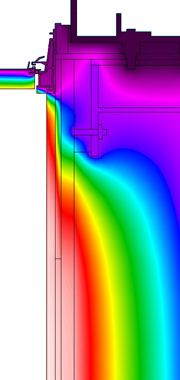Whole Building Energy Modeling
| |
| Heating and Cooling Load Analysis An energy model provides quantifiable data on heating and cooling loads for all spaces within a building. By considering the effects of a building’s actual envelope construction, actual lighting system and internal equipment, and intended occupancy and use patterns, the heating and cooling loads simulated from an energy model informs the mechanical design process. This helps maximize system efficiency and performance. | |
Thermal Envelope AnalysisThe building envelope offers many opportunities for improving energy performance. The design of a high-performing building shell must consider multiple variables such as insulation type, framing material, construction technique, and infiltration control, to minimize energy loss. Second Law can compare a range of options for shell assemblies and construction methods to help determine an effective solution for your project and your budget. With thermal modeling software, we are able to look beyond the nominal R-Value ratings of individual materials to visualize the performance of the assembly as a whole. This allows us to pinpoint moments of thermal bridging and to explore more effective alternatives. For new projects, our thermal envelope analysis provides data to help maximize energy performance and minimize construction costs. For renovations and retro-fits, this analysis provides insights to determine the most effective building components for energy upgrades. |  |